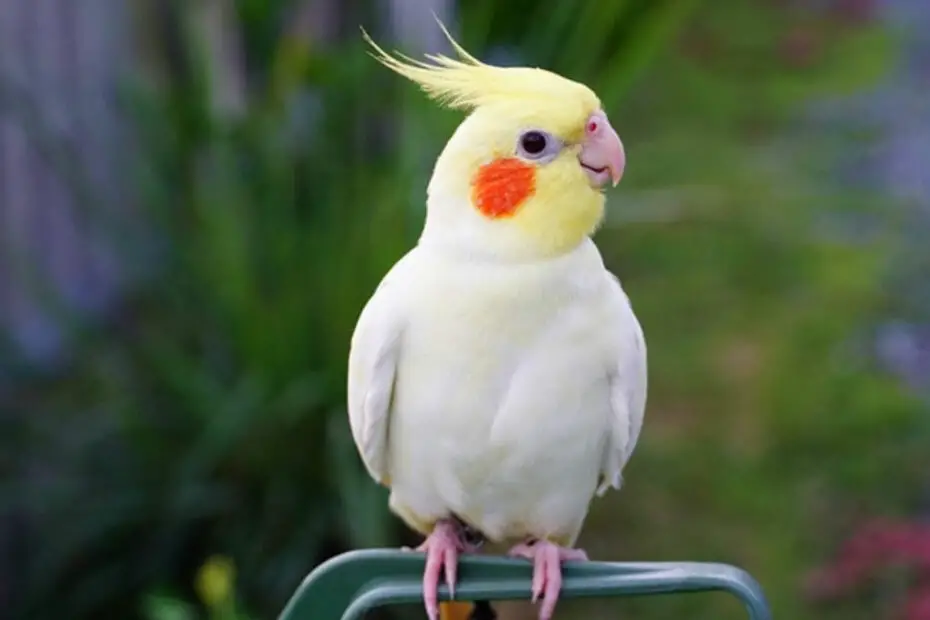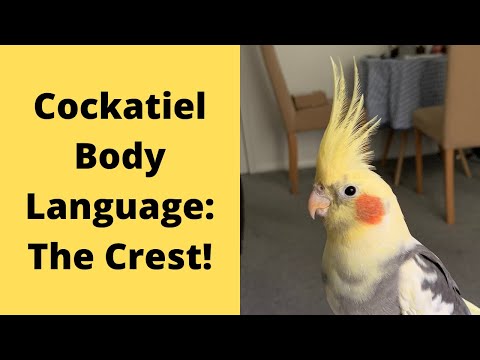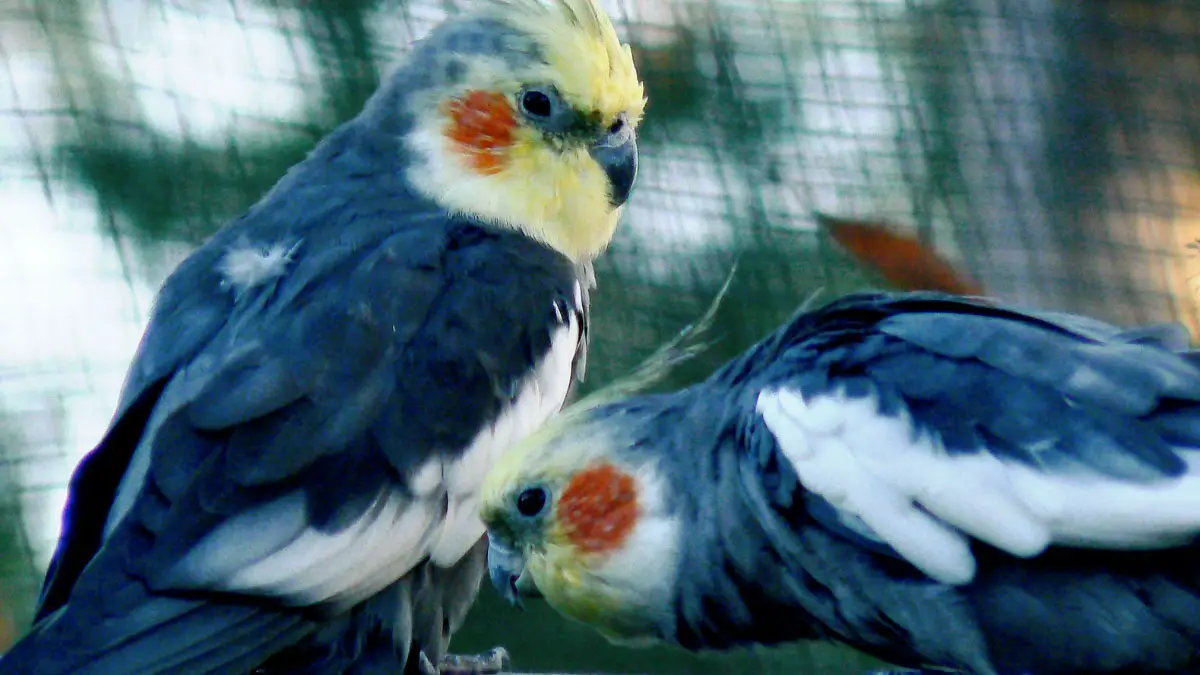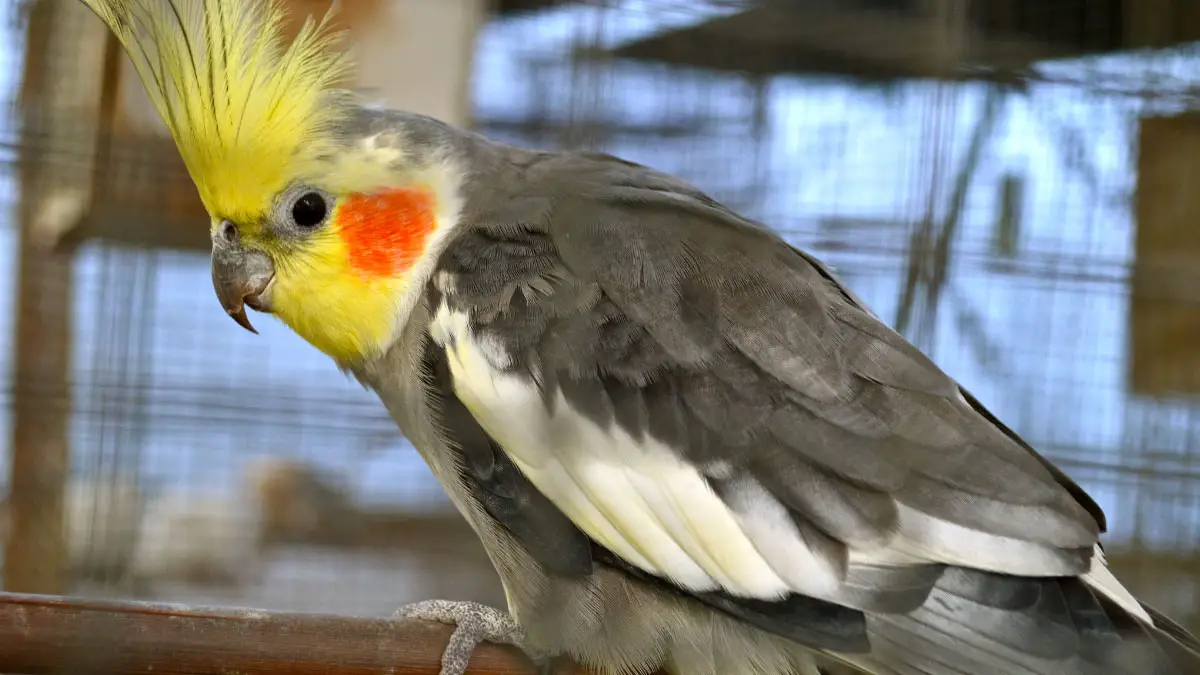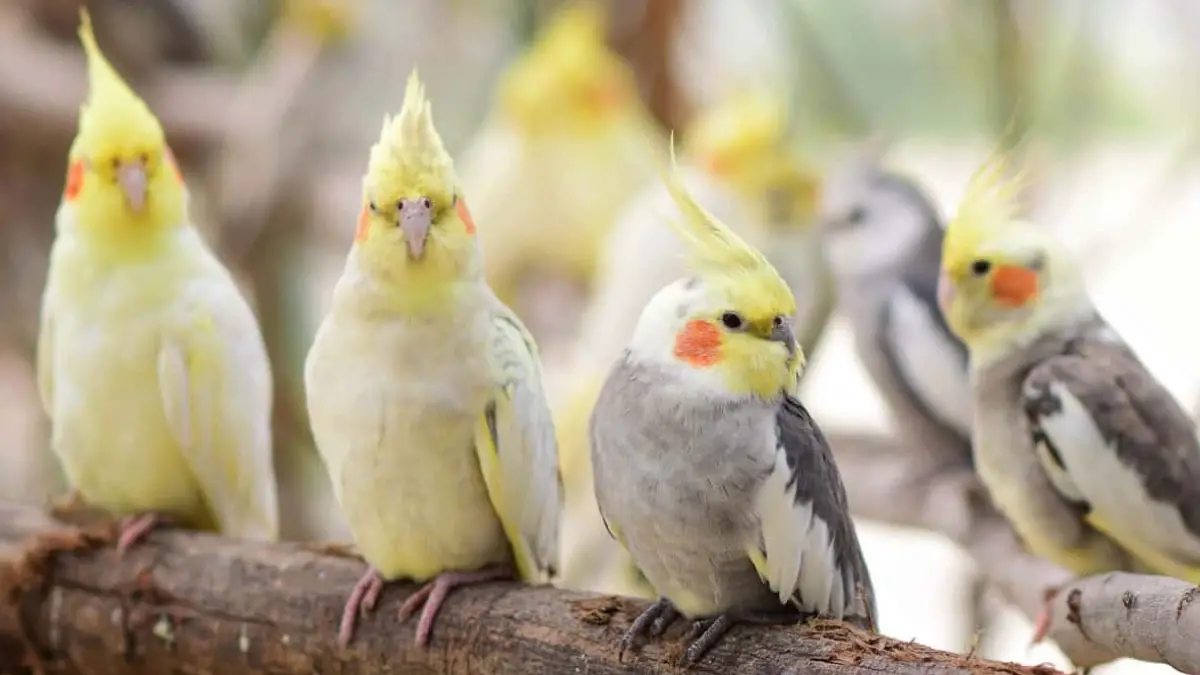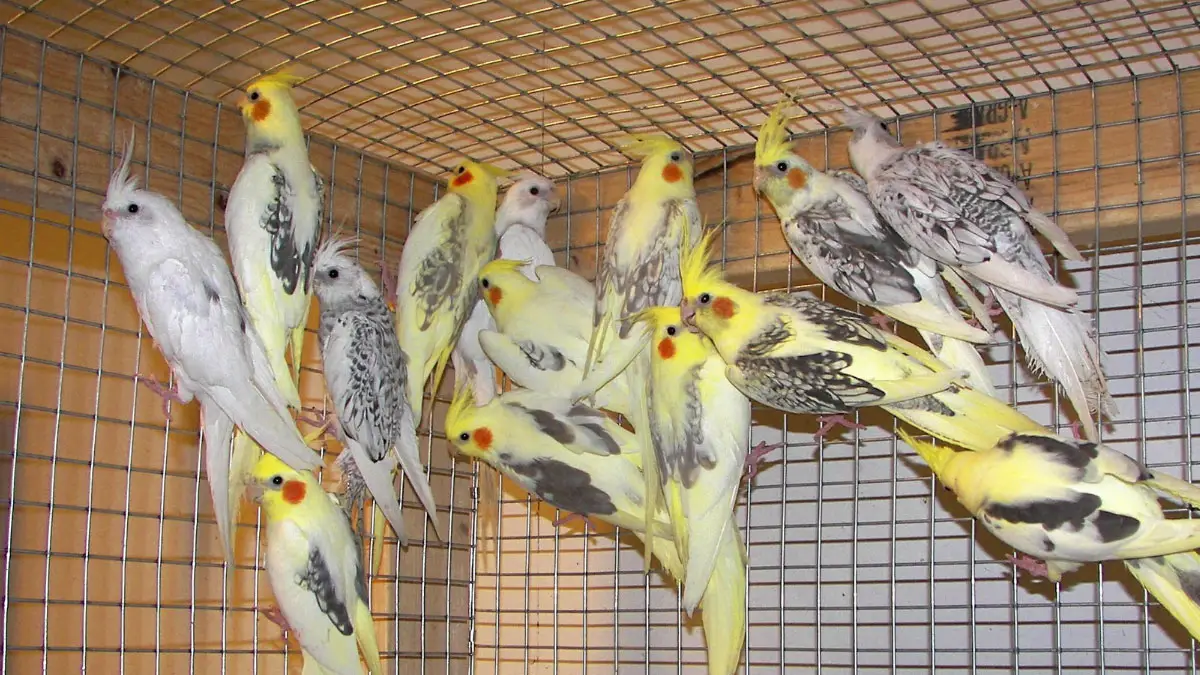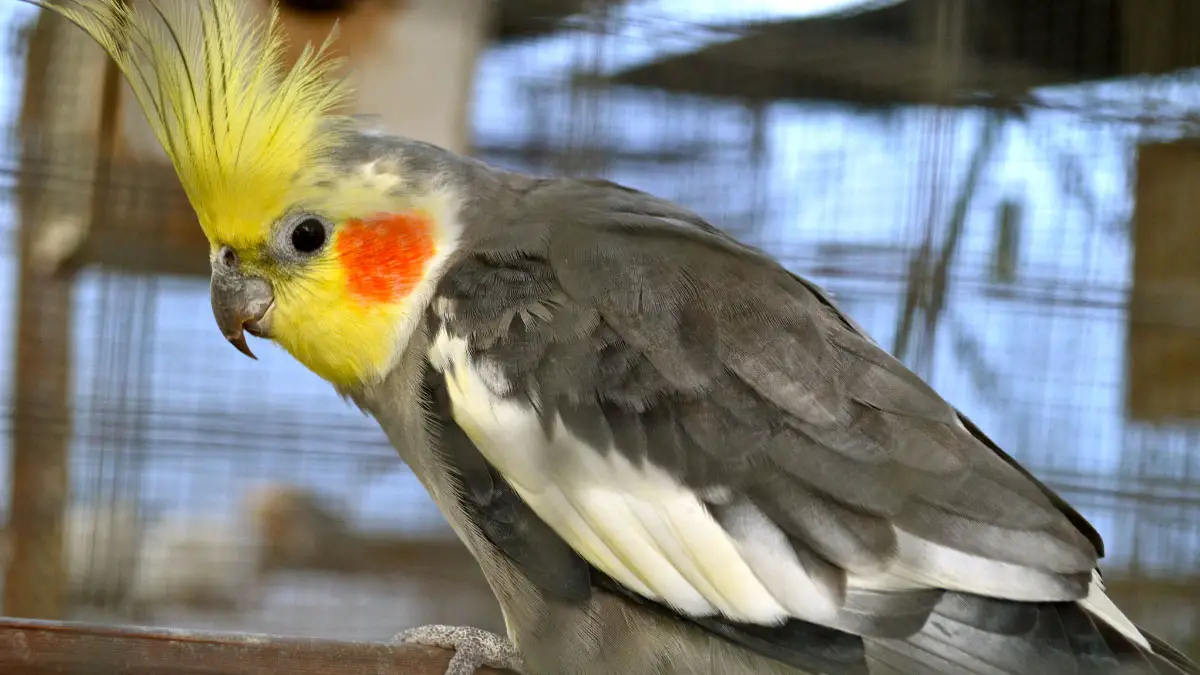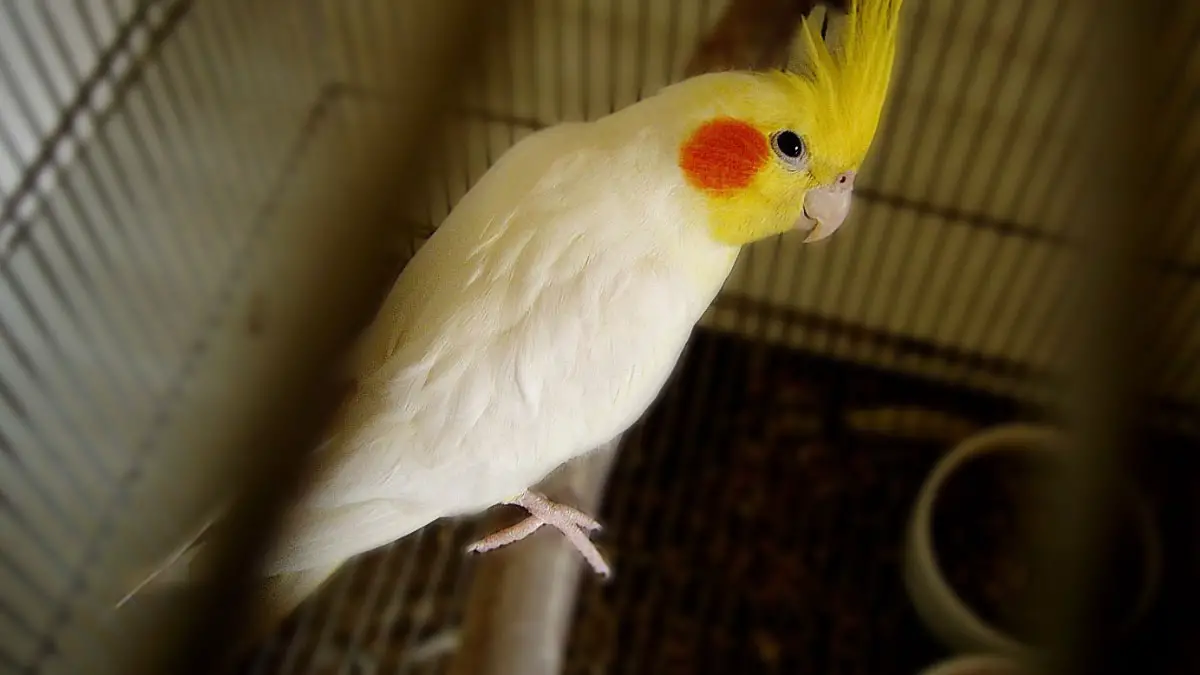Cockatiels are tiny parrots who belong to the cockatoo family and are often referred to as gentle and amicable. Similarly to the other birds, they use certain body language and vocal signals to communicate with humans and birds.
These signals also reflect their mental and physical condition, whether they are happy or sad, sick or well. Thus, understanding the signals can let you know how to deal with the cockatiel in certain situations.
Apart from that, deciphering cockatiel communication can help the owner to bond more with the bird. This facilitates creating friendly behavior toward humans and also makes the training session easier.
Overall, a basic knowledge of the body language and sounds made by the cockatiel helps to know about their physical and mental conditions. There are specific signals shown by birds during certain situations. Which reflects their physical and mental state in that circumstances.
Here, we are going to highlight the common behaviors, body language, and vocalization of the cockatiel, which will lead you to understand them more precisely. Later, you can tackle emergencies during cockatiel training by observing them thoroughly while maintaining a lovely bond.
Deciphering Cockatiel Body Language
Birds often express themselves with their gesture and movements. Necessarily, changes in bird behavior allow humans to know how to act correctly at the moment. This increases the chance of bonding and taming the bird.
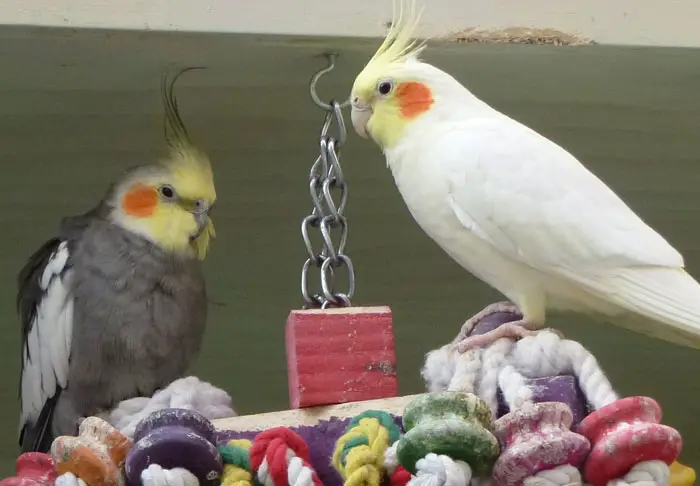
Cockatiel behavior experts have also disclosed that birds react to stressful conditions in a different way. By their body language, they demonstrate certain behaviors. Knowing such behaviors helps in cooperating with the birds as well.
As it’s necessary to know the meaning of body signals, you might come across the question of how to interpret cockatiel body language. To help you out, the body language that is commonly observed in the Cockatiel is added below.
Tail Wagging
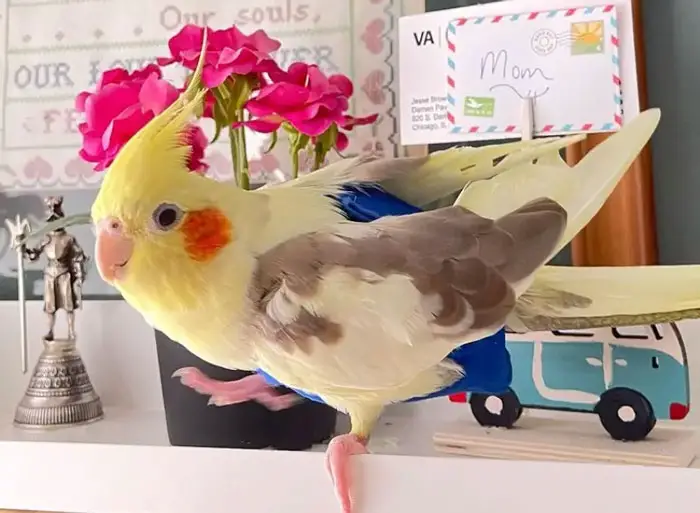
One of the common body languages that are shown by the Cockatiel is tail wagging. They will move their tail while walking or even standing. This indicates how happy they are to be in that place.
Even moving their tail while walking towards you can be a sign that they enjoy the time being with you. Importantly, the head should be pointing upward. If it’s facing down, it means they might be upset.
Dilating Pupils
When the cockatiel is angry, its pupils will immediately dilate. Later on, it is accompanied by tail flapping. If you notice it, stop doing what you are doing, as you are making them annoyed.
Eyes Widen
Eyes generally become widen when the bird is scared.
Crest
- The crest is positioned straight up and puffed; it often shows they are excited, especially when it is followed by chirping noises.
- On the other hand, if the crest is up and stiff, it indicates they are scared. It may be accompanied by noise as if they are protecting their privacy and being alert and cautious.
- Moreover, if it is positioned in the middle and relaxed, it shows the pet birds are normal and doing the average things that they should be doing.
- Lastly, when the crest is down, flat, and thin, it indicates they are stressed out or suffering from pain.
- It is also thought that if the head is facing down with a flat and thin crest, the cockatiel might be angry.
As people still are confused over the crest signs, you can follow the below cockatiel behavior guide to get a visual.
Head-Shaking
- It is generally the responding sign to noises.
- Apart from that, it can be an indication of a respiratory or ear infection.
- It can also occur if they have got water in their ears and they are trying to pull it out by shaking.
Head Snaking
Moving the head side to side is also a common sign when they want to get attention.
Standing On One Leg
The birds often stand on one leg when they are comfortable with the environment. Also, they enjoy sleeping in such a posture.
Lifting Feet
The birds will lift their one foot when they want something from you.
Wings
They will make heart-shaped wings to attract other companions. It occurs frequently in mating season. On the other hand, if they spread their wings instead of making shapes, it means they are protecting their area from intruders.
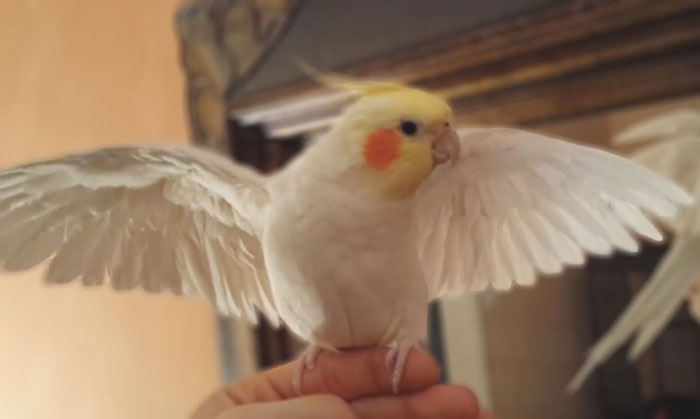
Also, If you are constantly annoying your Cockatiel, it will show anger by flapping its wings. That’s a clear sign that it does not want you to come closer.
Beak Grinding
These gestures indicate that they are happy and comfortable. It’s also a common signal they show before going to sleep.
Beak Banging
Banging their beak on the cage or on toys often means they want attention and want to play.
Sticking Beak
When the birds need to grab the attention of people or want to play with them, they will show this sign.
Ruffling Feathers
Sometimes the Cockatiel might ruffle his tail and feather out of anger while looking down. Moreover, some might fan their tails as well. If they keep on doing this and moving toward you, immediately leave them alone before they burst out.
Feather Plucking
Feather plucking can be a sign of boredom or illness. In the case of illness, it can be caused by nutrient deficiency, allergy, infections, or being in contact with irritants.
In addition to this sign, if the bird is weak, consult a vet to treat them.
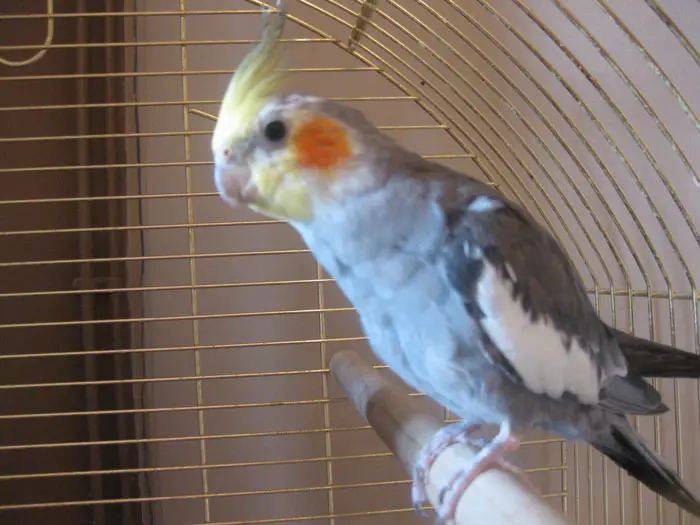
Flip
If you find your bird-flipping upside down means they do not want to interact now. Move back if you are near the cage or their area. Otherwise, being too close might make them feel threatened. So, do not invade their privacy.
Snapping
Sometimes, a Cockatiel might snap at you. This indicates that at any time, they will either bite you or jump at you. If the snapping is accompanied by a hissing sound, surely they are angry. In such a case, moving away is the best option.
Leaning
If the cockatiel is leaning toward a person or a toy means that the bird likes them and wants to cuddle. It’s a sign of cockatiel socialization.
Hopping
It shows that they are trying to seek attention from the people or other mates around them.
Interpreting Cockatiel Vocal Signals
Apart from using body language, cockatiels also express themselves with vocalization. Even though they are vocal birds, they tend to make certain signals to attract other people. Bird communication research shows that birds use different body language and sounds in order to connect with others. Apart from that, their emotions are also illustrated by such behavior.
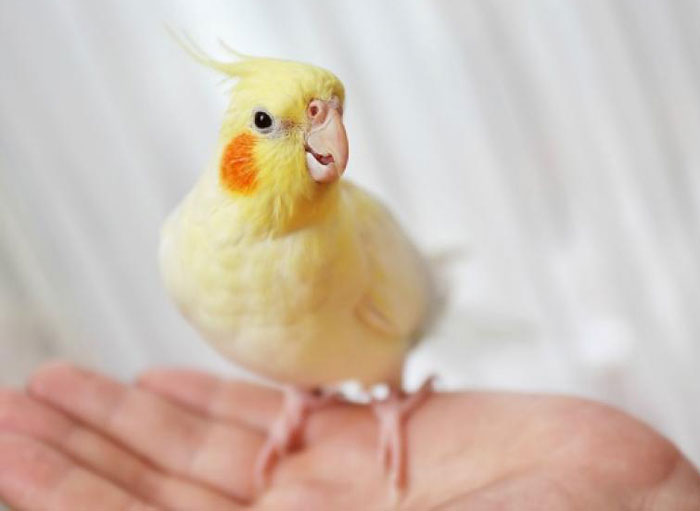
Similarly cockatiel also exhibits different sounds while bonding with other birds. This helps them to attract their companion and also in leading flocks.
Moreover, by understanding Cockatiel vocalization, you can also detect the problems with your lovely bird.
Chirping And Whistling
Every bird tends to chirp, especially in the morning and evening. Similarly, cockatiel makes whistling and chirping sounds at those times of the day. Nevertheless, it occurs often when they are too happy or excited.
Not just that, it also shows that they are fully content with their surroundings and with the way they are being treated.
Singing
Sometimes you will find your Cockatiel trying to sing with its melodious tones. It is a sign of how cheerful they are. In some cases, they just want your attention because they might be too bored or lonely. So by singing, they are only trying to draw you closer to them and communicate.
Squawking
Generally, squawking sounds are similar to screaming but on a high pitch. The birds simply make this sound when they want attention. On the other hand, it can also be because they are feeling bored, alone, stressed, in pain, or even scared.
Commonly, female cockatiels make noise in the mating season and it might seem noisier due to anger issues and hormonal changes.
Clicking Beaks
The birds often click their beaks out of excitement and also when they want the attention of others. On the other hand, excessive clicking noise reflects that they are being protective of their area and do not want any invasion.
Growling
The growling sound reflects the anger of the Cockatiel. Especially, when the sound is followed by a dilated pupil and the head facing down. In this situation, let them take a rest and calm down. Stop approaching the bird and avoid making them angrier.
Hiss
The hissing sound is often followed by dissing body language. It means the Cockatiel does not want you near them or they are not liking what you are doing. Your actions might be making them feel threatened.
As a result, they are giving warnings by making such a sound. So, stop being too close to them and move away before they attack you.
Cockatiel Communication: Understanding The Flock And Hierarchy
Cockatiels, like other birds, love to live in flocks. Even when you place them in one cage, you will find behavioral variations in them. You will notice that there’s always a leader who will dominate others, whereas others are always obedient.
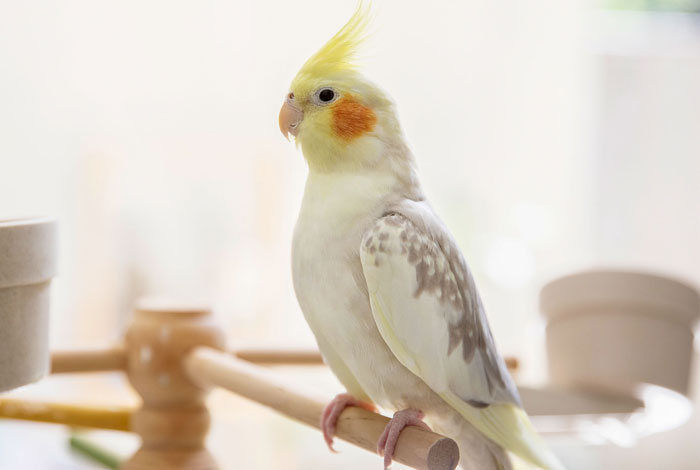
To some extent, it is a good sign, as they have control and can create balance in the territory. In situations such as when they are hungry, they will make noise, chirping, and squawking sounds. It becomes a headache to even handle them.
Here the leader comes forward to help by making other birds obey. This hierarchy is obvious in all bird flocks. The female birds are always responsible for making a cozy nest. In comparison, the male birds are protecting the residence.
The leader is not always the eldest in the cage. Instead, it can be any cockatiel that has the most power over other birds. They also make indication signs and sounds during being confined in the cage. It’s a way of their communication.
Mainly cockatiel loves being in a group and spending time with their friends. This makes them more desperate to communicate when they are alone.
In the case of feeding, they will become chaotic when they are starving. Additionally, they will walk away from the feed when they are full. That’s why you always keep adequate feed in the cage so that they don’t create disturbing sounds. Sometimes the sounds are only made to attract other birds so that they can have a meal together.
The birds also try to attract their mates by dancing and flapping their wings. They thus not only entertain the other birds but also attract the others during the breeding season. Apart from that, finding a new mate creates the possibility of building a new home in the wild.
Cockatiels also build nests in open and hollow spaces and are cavity nesters. Even though they prefer living in flocks, they always change their nesting locations. And always find a bigger group to live with.
Emotions And Cockatiel Language
Cockatiels display their emotions by showing different body language. And you would not be able to communicate with the bird without identifying its actions.
Now the question stands, how to communicate with your Cockatiel? Well, you can follow below emotional signals to get closer to your bird.
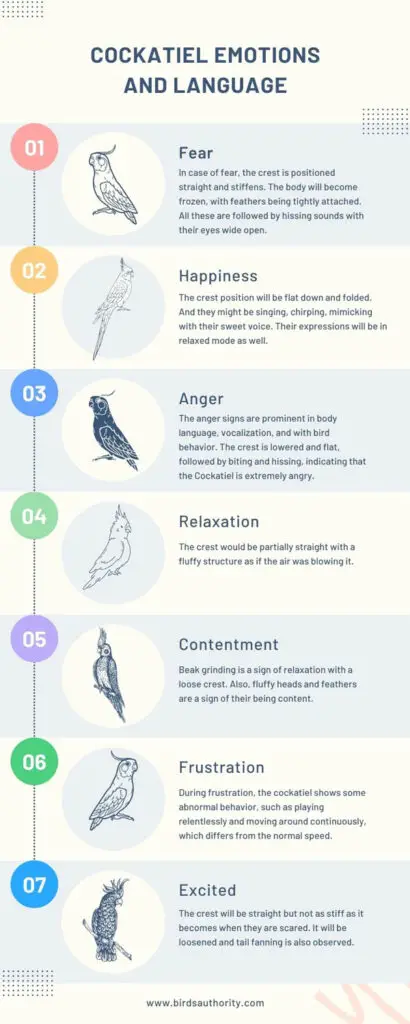
Fear
In case of fear, the crest is positioned straight and stiffens. The body will become frozen, with feathers being tightly attached. All these are followed by hissing sounds with their eyes wide open.
Happiness
The crest position will be flat down and folded. And they might be singing, chirping, mimicking with their sweet voice. Their expressions will be in relaxed mode as well.
Anger
The anger signs are prominent in body language, vocalization, and with bird behavior. The crest is lowered and flat, followed by biting and hissing, indicating that the Cockatiel is extremely angry.
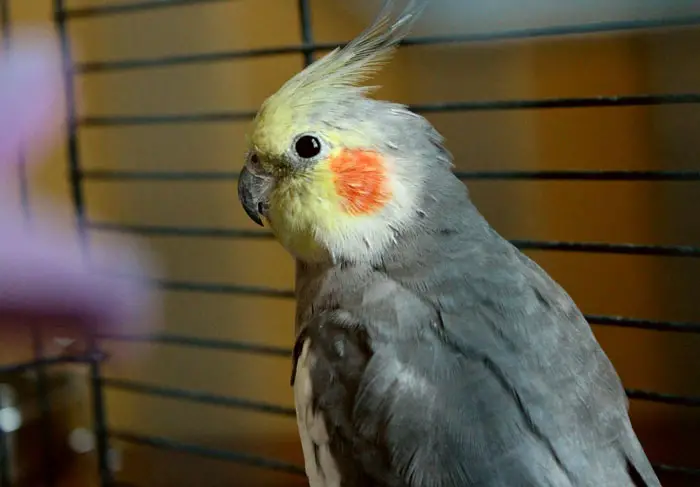
Relaxation
The crest would be partially straight with a fluffy structure as if the air was blowing it.
Contentment
Beak grinding is a sign of relaxation with a loose crest. Also, fluffy heads and feathers are a sign of their being content.
Frustration
During frustration, the cockatiel shows some abnormal behavior, such as playing relentlessly and moving around continuously, which differs from the normal speed.
Apart from that, from time to time, they can become silent, eat less, and not interact at all. Well, all these behaviors are a result of the environmental impact and sometimes due to hormonal changes.
They might be feeling suffocated in the place, which is causing them stress.
Excited
The crest will be straight but not as stiff as it becomes when they are scared. It will be loosened and tail fanning is also observed.
FAQs
Let’s check out some frequently asked questions by you guys.
Some common Cockatiel vocalizations, such as chirping, whistling, and singing, mean they are happy. Screaming can refer to when they are scared or angry. A hissing sound indicates they want you to stay away. Squawking sounds reflect that they are lonely, scared, ill, or stressed.
Anxious cockatiels will exhibit signs such as excessive movement, being angry, making hissing sounds, and being vengeful. They can also be too calm, not eating or sitting in the cage’s corner out of stress.
Cockatiel common body signals for illness are bobbing tail, plucking feathers, and behaving abnormally. Other than that, sitting for a while unusually, sleeping too much or too less, eating less, showing repetitive movement and frequent screaming can also be signs of illness.
To improve the communication skills of the Cockatiel, you need to interact with them more frequently. Well, they are friendly and would imitate your voice and words. Little by little, they can become fond of you, improving parrot communication.
Conclusion
Overall, decoding the vocal and body positions of cockatiels helps to build a connection with humans and other fellows. Also, the hierarchy of the flocks and the emotions that they show indicates their socialization acts. Nevertheless, the changing behavior always gives a vivid idea of their actions.
Additionally, the signals can reflect health problems in cockatiels that help monitor their disease conditions. And decoding these signals can improve communication.
However, further research is always encouraged to know more about bird language. Moreover, only some signals are decoded by humans. Therefore, do not panic if you discover any abnormal behavior; instead, unleash them.
Cockatiel anatomy
The anatomical sructure of the cockatiel is similar to the other avian. Generally, coackatiel has a quicker heartbeat due to its higher requirement of oxygen. Which is necessary the most during flying. The body of the cockatiel is also lightweight and the bones are hollow. This structure also facilitates flying.
Moroever, to digest the foods they have a pouch of muscle. Which softenens the food and makes it available for absorption. Focusing on the excretory system, they do not have bladders, rather they have cloaca which excretes the waste. And they do not have separate excretion methods for urine. Excretion of wastes follow the same route in their body.
Uniquely, they have tetra or pentra chromatic vision which allows them to visualize a wide range of colors.
Cockatiel species
Cockatiel are considered parrot-like birds which are known as Nymphicus hollandicus. These species belong to the cacatuidae family.
Bird body language specialists decode the languages used by the birds. Though all the bird languages are not decoded completely, yet they play a major role in communication. And there is still more scope of research regarding the body language and vocalisation of birds.
